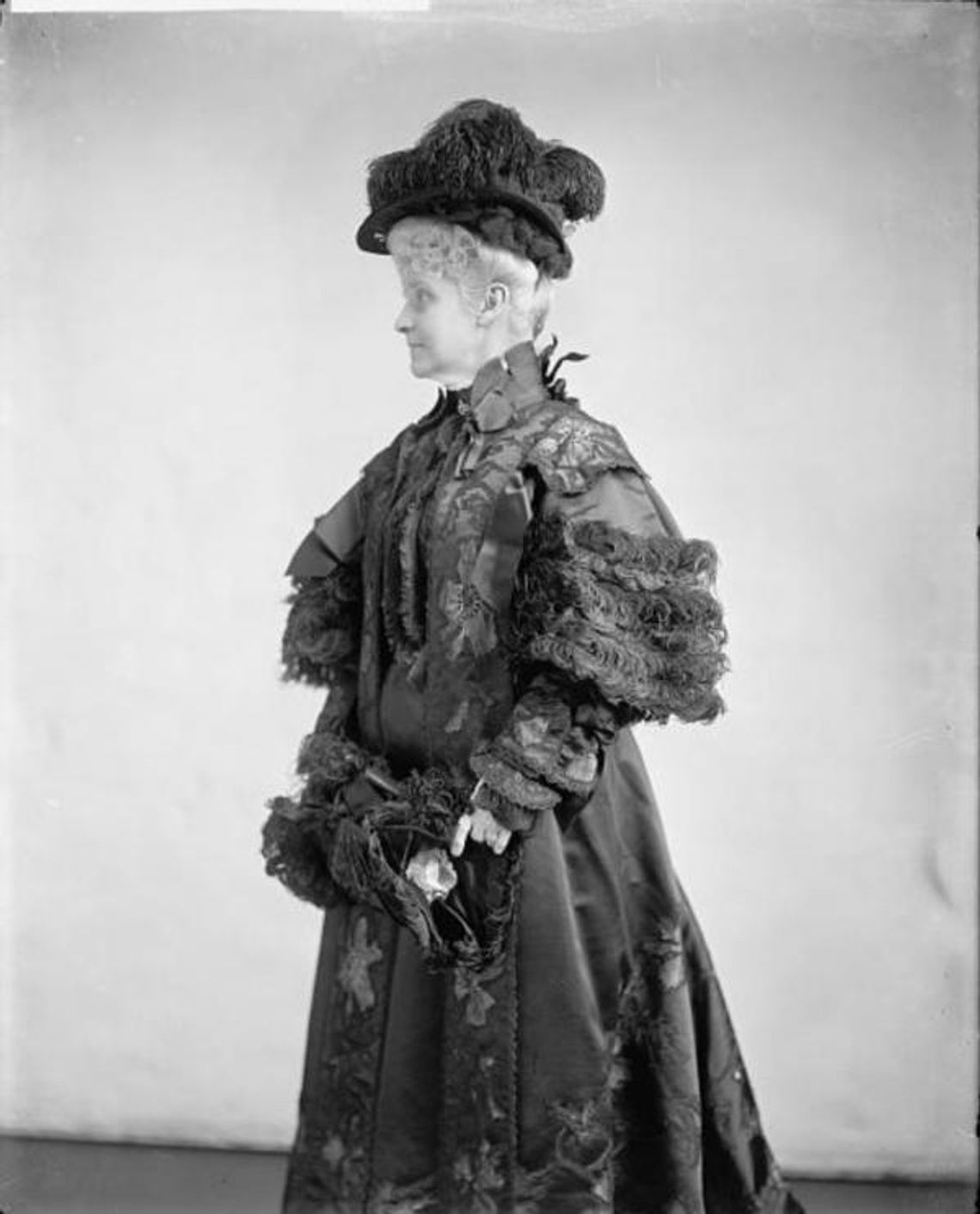From time to time, I like to include historic personalities in this column, men and women never mentioned in my history classes, grade school through grad school. I have only heard about, read about and researched these folks within the last decade. Yet, in my humble opinion, many were differencemakers in their time. I’ll begin this Women’s Month’s series with one of Washington’s early social arbiters who wielded amazing power in the nation’s capital during her lifetime. Her name: Mary Foote Henderson (1841-1931).
Born in Saratoga Springs, New York, Mary was the daughter of a prominent judge and the niece of Connecticut’s Governor and later, Senator Samuel Foote. Mary was educated at Temple Grove Ladies Seminary (now Skidmore College), and Ashgrove Seminary, finishing at a French school in New York City. She was fluent in French, developed a lifelong interest in painting and collecting fine art. Following her curious instincts, she traveled to Washington, D.C., to see for herself how the Washington glitterati gave the parties she had only read about.
In Washington, she met John B. Henderson, senator from Missouri, who introduced the 13th Amendment to the Constitution, abolishing slavery. He also was one of seven senators who cast a career-ending vote against the impeachment of President Andrew Johnson in May 1868.
By that time, Mary and John were married and the couple moved to St. Louis, where they welcomed their only child, John Henderson, Jr., in 1870. While John built a lucrative law practice, Mary pursued interests of her own. Like her mother, she was a strong advocate for women’s suffrage, becoming president of Missouri’s Suffrage Association. Simultaneously, many Suffragettes also supported the Prohibition Movement.
Mary studied art at Washington University, founded the St. Louis School of Design and established The St. Louis Women’s Exchange in 1883, dedicated to helping craftspeople reach their goals. Quite quickly, the energetic Mrs. Henderson became known as one of the city’s excellent hostesses and wrote a guide to fine dining and entertaining titled, “Practical Cooking and Dinner Giving.”
After acquiring significant wealth during their time in St. Louis, the Henderson’s returned to Washington, D.C., where they bought several lots on the rural edge of the city to accommodate a home they named “The Boundary Castle,” along with several acres of well-manicured gardens. The couple then bought 300 lots around what was known as Meridian Hill, which led to the construction of Meridian Hill Park.
The Henderson’s’ first formal dinner in Washington, held in February 1890, drew a rave review from The Washington Post, which marveled at Mrs. Henderson’s elegant attire—her Felix gown of old rose velvet trimmed in gold—as well as her lavishly furnished castle: “the ‘mellow’ Moorish entrance hall, plush-lined picture gallery used as a ballroom, and grand oak-paneled dining room hung with oak-leaf embroidered tapestries. An invitation to dine with the Henderson’s immediately became a highly sought-after status symbol.
Mary Henderson sawWashington, D.C., as the capital of American culture, and fought tirelessly for its beautification. She campaigned, though unsuccessfully, to have 16th Street lined with the busts of former Presidents and to rename the street “Avenue of the Presidents. She offered “Boundary Castle” to be used as the official residence of the U.S. Vice-President, and spent an entire year designing a more spacious White House to be built across the street from the castle.
She became known as the "Empress of Sixteenth Street" and set about developing Meridian Hill into an equivalent of Paris' Avenue Foch, lined with beautiful mansions. Mary built 12 mansions, all serving as embassies.
Her campaigns ranged from seeking uniformity for Washington’s buildings, both in color and height; banning doubledecker buses; the dangers of alcohol and overeating; and she launched a worldwide campaign against women wearing body-baring bathing attire, short dresses and smoking.
As the Commission of Fine Arts reported: "She labored four decades, persuading and convincing Senators and Representatives; single-handed and alone she appeared before Congressional committees, urging approval for the work of development. She won." Mary was a disciplined early-riser and a voracious reader as she continued advocating for women’s suffrage, temperance and adopting a new cause -- vegetarianism. At the turn of the century, this disciple of exercise and a meatless diet wrote “The Aristocracy of Health.”
By the time this book on healthy living was published, Mrs. Henderson had become famous for her elegant dinners featuring strictly vegetarian cuisine and no alcohol. A 1905 fete included a fruit soup, mock salmon in hollandaise sauce, broiled slices of pine-nut Protose (a meat substitute made of peanut butter, wheat gluten, and corn starch, among other things), unfermented Catawba wine, iced fruit, and Kellogg Gelatins for dessert.
As reported in The Washington Post, “the printed menu cards for this dinner included ‘figures corresponding to each dish, showing the number, kind, and proportion of the food units, or ‘calories,’ contained in each one.’ Like all meals prepared by Mrs. Henderson’s British chef, it was said the uninitiated couldn’t tell that they weren’t eating meat or fish.”
John Henderson, several years his wife’s senior, died in 1913, leaving behind a lifetime collection of expensive wines and rare liquors in the castle’s cellar. “Mary decided to dispose of the plentiful stocks. Her butler, a member of a Christian temperance society, had recently asked for the use of the castle grounds by his group.
“Mary agreed, and members of the butler’s group brought armfuls of bottles up from the castle’s cellars and smashed them on large rocks. There was so much wine, it ran down into the gutters of 16th Street.” The newspapers loved the story. As The New York Times continued: “Along the gutter down the hill, people from all walks gathered, and, with tomato cans and other utensils, scooped up what they could of the liquor and drank it. As they enjoyed themselves, the Christian society sang stirring temperance hymns.”
Mary Foote Henderson died in 1931 at age 90, America’s poster child for exercise and a vegetarian diet.
As early as 1935, there had been talk of tearing down the old castle, but it hung on as a popular meeting, wedding and banquet venue until January 1949, when it was
.png)












